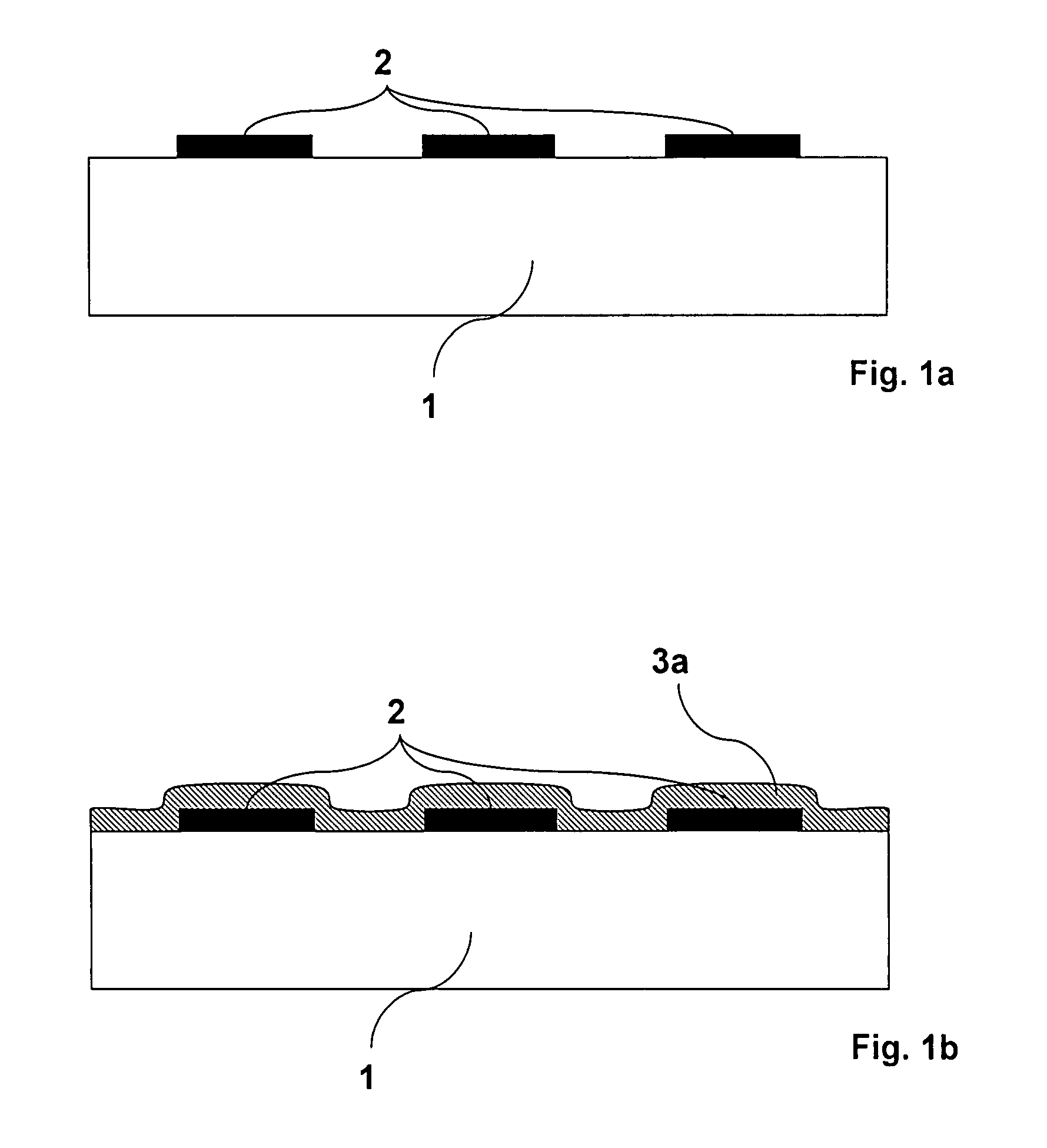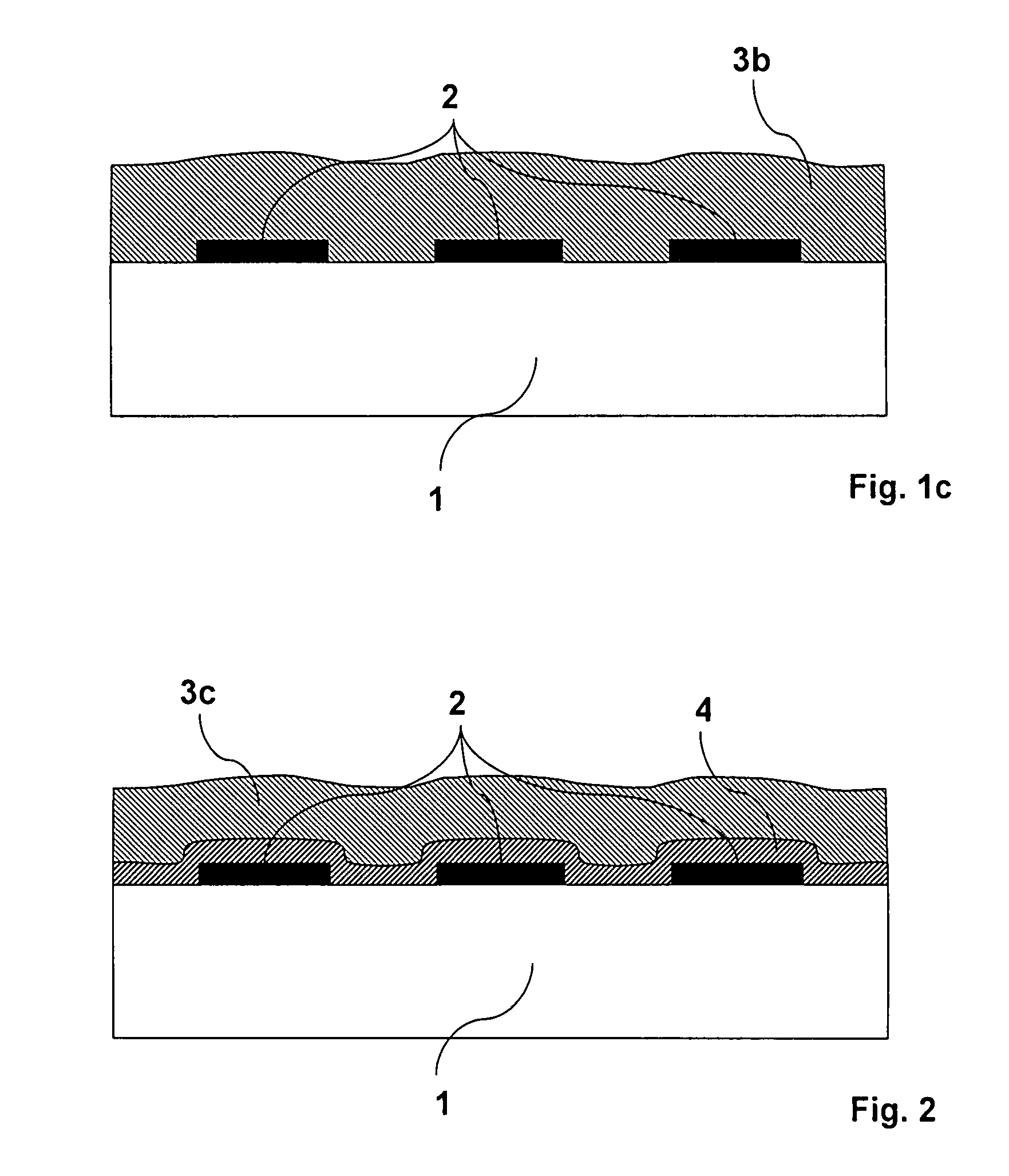RF resonator system and method for tuning an RF resonator system
a resonator and frequency technology, applied in the field of radiofrequency resonator system, can solve the problems of lithography, difficult to interrupt conductors without damaging adjacent conductors, and the greatest voltage difference between adjacent conductors at the end of finger capacitors, so as to reduce the perturbation of static magnetic field, reduce the perturbation of the static magnetic field, and avoid large step changes in the dielectric constant
- Summary
- Abstract
- Description
- Claims
- Application Information
AI Technical Summary
Benefits of technology
Problems solved by technology
Method used
Image
Examples
Embodiment Construction
[0054]In the inventive method, the required resonance frequency of the resonators is set by varying the capacitances without varying the conductive structures (conductors). For this purpose, the resonator is coated with a dielectric material, the resonance frequency being determined by choosing the thickness of the dielectric layer.
[0055]FIG. 1a shows a section through a substrate 1 and the conductive structures (conductors 2), e.g. within the finger capacitances of an HTS resonator or conductors of spiral resonators. FIG. 1b shows the corresponding resonator that is inventively coated with a dielectric layer 3a of little thickness. FIG. 1c shows an inventive resonator with a coating 3b with great thickness. For simple manufacturing, the inventive resonators, as shown in FIGS. 1b and 1c, are fully coated with a dielectric layer. However, it is possible to leave irrelevant regions uncoated.
[0056]In addition to the setting of the resonance frequency of the resonator system, the dielec...
PUM
 Login to View More
Login to View More Abstract
Description
Claims
Application Information
 Login to View More
Login to View More - R&D
- Intellectual Property
- Life Sciences
- Materials
- Tech Scout
- Unparalleled Data Quality
- Higher Quality Content
- 60% Fewer Hallucinations
Browse by: Latest US Patents, China's latest patents, Technical Efficacy Thesaurus, Application Domain, Technology Topic, Popular Technical Reports.
© 2025 PatSnap. All rights reserved.Legal|Privacy policy|Modern Slavery Act Transparency Statement|Sitemap|About US| Contact US: help@patsnap.com



